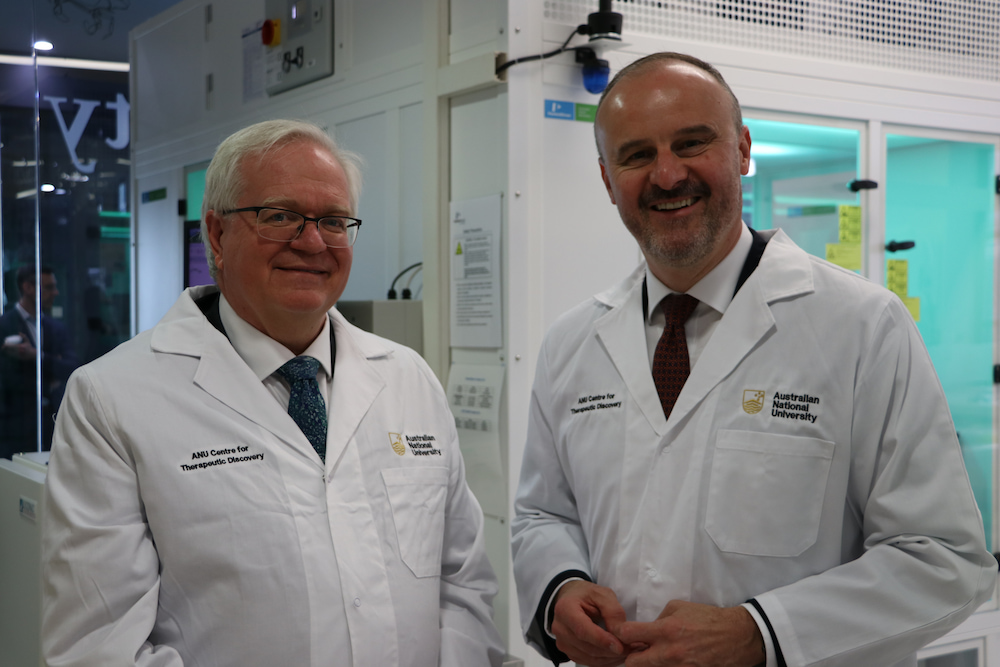Last year, the corner of Marcus Clarke Street and Gordon Street was a carpark; now, it is a temporary storage facility for the light rail extension project. But by the end of the decade, it will be the site of a world-leading national health and medical precinct, ANU Vice-Chancellor Brian Schmidt announced today.
“It’s not just business as usual – it’s the future,” Professor Schmidt said. “That’s what’s going to be in this building.”
Here, researchers – “not just people from Canberra, but people from Australia and the world” – will research cancer treatments; personalised medicine; genetics; and advanced therapies containing biology, chemistry, and physics that are unknown today: “Ways of tackling disease that are five years in the future.” It will also be a centre for policy making in health.
The precinct, Professor Schmidt predicts, will bring in a new class of medical and clinical researchers: a clinic will use, in real life, the therapies developed in laboratories, thus complementing other parts of the Canberra health system.
“[The precinct] symbolises our determination that Australia’s national university plays its full part in combating and controlling disease, improving the health of all Australians, and placing our nation at the cutting edge of health and medical research and education,” he said.
The 8,600 square metre precinct is “perfectly situated”, Professor Schmidt believes: next to the National Health and Medical Research Council and the Australian Academy of Science; near the heart of the campus; and within 100 metres of light rail. When complete, the precinct will be a gateway between the capital city (on the west) and the ANU campus (on the east) – the way that people will come to the campus from the new light rail station.
Its closeness to light rail makes the precinct strategically located, Chief Minister Andrew Barr stated. The government’s public transport investment, servicing that part of the city, has generated interest from the public and the university sectors – which generates jobs, economic activity, and revenue for the ACT, “all of which go to improve our total economy and offset the costs of infrastructure investment”.
The ACT government sold the land block to ANU for $16.75 million, through a direct sale negotiation. Mr Barr said his Cabinet considered the value of the partnership with ANU was greater than releasing the site to the general market.
The ACT government and the ANU, Mr Barr said, share an objective “to further the University’s research base, to further its involvement in our city, and our nation”. He believes the precinct will become a place of employment and economic activity; as the University’s economic output increases, it will generate more revenue for the ACT.
“The Territory’s economy and the social and cultural life of Canberra are always improved when our universities engage and partner with the Territory government,” Mr Barr said. “When our universities are strong, our economy and our city is strong.”
The ANU will not create the precinct alone, Professor Schmidt said; it (and all universities, in fact) are financially constrained. He is looking at a multi-stakeholder partnership: not only with the ACT government, but also with the Commonwealth, businesses, non-government agencies, academic partners, and Canberrans. Already, potential partners have been very interested.
“It’s not going to be just one thing, but it is going to be many things coming together – a place where you can see health technology sitting alongside policy planning,” Professor Schmidt said.
But until the ACT government finishes using the site for light rail, work cannot begin. Professor Schmidt estimates that work will begin in three or four years, and be finished by the end of the decade.
Canberra Daily is keen to hear from you about a story idea in the Canberra and surrounding region. Click here to submit a news tip.



